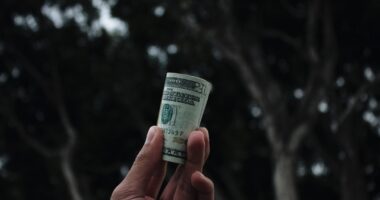Minting an NFT (non-fungible token) is the process of creating a unique digital asset on a blockchain. Unlike fungible cryptocurrencies such as Bitcoin or Ethereum, NFTs are distinct and cannot be replicated. When creators mint an NFT, they tokenize their work, transforming it into a digital asset for buying, selling, and trading on online marketplaces.
The minting process typically involves selecting a platform, uploading the digital file, and paying a minting fee. Once created, the NFT receives a unique identifier on the blockchain, serving as proof of ownership and authenticity. This allows buyers to verify the originality and ownership of the digital asset, enhancing trust and security in online transactions.
NFT minting has gained popularity among artists, musicians, and creators as a means to monetize digital content and engage with a global audience of collectors and enthusiasts. The ability to tokenize digital works has created new opportunities in the digital economy. As the NFT market expands, understanding the minting process and its implications becomes crucial for those interested in participating in this emerging field.
Key Takeaways
- Minting an NFT means creating a unique digital asset on a blockchain, often representing digital art or collectibles.
- The hidden costs of minting an NFT include transaction fees, environmental impact, and potential legal issues.
- Minting an NFT can offer potential returns through royalties, ownership rights, and new opportunities for digital artists and creators.
- The rise of NFTs is creating new job opportunities in the digital art world, including roles in NFT curation, marketing, and management.
- NFTs are impacting the cryptocurrency job market by creating demand for roles in NFT development, blockchain technology, and digital asset management.
- The relationship between Bitcoin and NFTs is complex, with NFTs often purchased using cryptocurrency and influencing the value of digital assets.
- Predicting the long-term implications of minting NFTs involves considering their impact on art, finance, and the digital economy, as well as potential regulatory changes.
The Hidden Costs of Minting an NFT: Uncovering the Financial Implications
Gas Fees and Transaction Costs
While minting an NFT can offer creators a new way to monetize their work, there are hidden costs and financial implications to consider. One of the primary costs associated with minting an NFT is the gas fees, which are transaction fees paid to miners on the blockchain network to process and validate the creation of the NFT. These fees can fluctuate based on network activity and can be substantial, especially for high-value NFTs.
Platform Fees, Royalties, and Environmental Impact
Additionally, there may be platform fees or royalties to consider when minting an NFT on certain marketplaces, further impacting the overall cost. Another hidden cost to consider is the environmental impact of minting NFTs. The energy consumption associated with blockchain networks, particularly Ethereum, has come under scrutiny due to its carbon footprint. The process of minting an NFT requires significant computational power, which contributes to the overall energy consumption of the network.
Reevaluating Participation in the NFT Market
As a result, some creators and buyers are reevaluating their participation in the NFT market due to concerns about sustainability and environmental responsibility. It’s important for creators and buyers to carefully consider the financial implications of minting an NFT, including the upfront costs, ongoing fees, and environmental impact.
Making Informed Decisions
By understanding these hidden costs, individuals can make informed decisions about whether to participate in the NFT market and how to mitigate any potential drawbacks.
The Benefits of Minting an NFT: Exploring the Potential Returns and Opportunities

Despite the hidden costs and financial implications, there are several benefits to minting an NFT that make it an attractive option for creators and collectors alike. One of the primary benefits is the potential for significant returns on investment. As the NFT market continues to gain traction, rare and sought-after digital assets have sold for millions of dollars at online auctions and marketplaces.
For artists and creators, this presents a unique opportunity to monetize their work in a way that was previously inaccessible through traditional art markets. Minting an NFT also offers creators greater control over their intellectual property and the ability to earn royalties on secondary sales. Through smart contracts on the blockchain, creators can program a percentage of future sales to be automatically paid to them, providing a source of passive income as their work appreciates in value.
This level of transparency and direct compensation is a significant departure from traditional art markets, where artists often struggle to receive fair compensation for their work. In addition to financial benefits, minting an NFT can also open up new opportunities for exposure and collaboration within the digital art world. By leveraging blockchain technology and online marketplaces, creators can connect with a global audience of collectors and enthusiasts who are eager to support and engage with their work.
This level of accessibility and inclusivity has the potential to democratize the art world, allowing artists from diverse backgrounds to thrive in a digital landscape.
NFT Jobs: How the Rise of NFTs is Creating New Job Opportunities in the Digital Art World
The rise of NFTs has not only transformed the way we buy and sell digital art but has also created new job opportunities within the digital art world. As more artists and creators embrace NFTs as a means of monetizing their work, there is a growing demand for professionals who specialize in blockchain technology, digital marketing, and online sales. From NFT consultants and market strategists to blockchain developers and smart contract lawyers, there is a wide range of roles emerging to support the growing NFT ecosystem.
One of the most prominent job opportunities in the NFT space is that of an NFT curator or art advisor. These individuals are responsible for identifying promising artists and digital content creators, curating collections of NFTs, and advising clients on potential investment opportunities within the NFT market. With the rapid expansion of online marketplaces and auction platforms dedicated to NFTs, there is a need for experienced professionals who can navigate this evolving landscape and provide valuable insights to collectors and investors.
Another emerging role in the NFT job market is that of a digital rights manager or blockchain copyright specialist. As more creators tokenize their work as NFTs, there is a growing need for professionals who can help artists protect their intellectual property rights, manage royalties through smart contracts, and navigate legal considerations within the blockchain space. This role requires a deep understanding of copyright law, blockchain technology, and digital asset management, making it a valuable skill set in the evolving digital art world.
As the NFT market continues to mature and expand, it’s likely that we will see even more job opportunities emerge within the digital art world. From community managers and social media strategists to virtual event coordinators and online art brokers, there is no shortage of potential career paths for individuals looking to leverage their skills in support of the growing NFT ecosystem.
Crypto Jobs: The Impact of NFTs on the Cryptocurrency Job Market
The rise of NFTs has had a significant impact on the cryptocurrency job market, creating new opportunities for professionals with expertise in blockchain technology, digital finance, and decentralized applications. With the increasing popularity of NFTs as a means of buying, selling, and trading digital assets, there is a growing demand for individuals who can navigate this complex landscape and provide valuable insights to clients and investors. One area of growth within the cryptocurrency job market is that of blockchain developers and smart contract engineers.
These professionals play a critical role in building and maintaining the infrastructure that supports NFT transactions on blockchain networks such as Ethereum. With expertise in programming languages such as Solidity and experience in decentralized finance (DeFi) protocols, blockchain developers are well-positioned to capitalize on the demand for their skills within the NFT ecosystem. Another area of opportunity within the cryptocurrency job market is that of digital asset analysts and investment strategists.
As more investors look to diversify their portfolios with digital assets such as NFTs, there is a need for professionals who can provide market analysis, investment recommendations, and risk management strategies tailored to this emerging asset class. Individuals with a background in finance, economics, or data analysis may find rewarding career opportunities within this niche sector of the cryptocurrency job market. In addition to technical roles, there is also a growing demand for professionals with expertise in digital marketing, community management, and online sales within the cryptocurrency job market.
As NFTs continue to gain mainstream attention and adoption, there is an opportunity for individuals with strong communication skills and a deep understanding of online marketplaces to thrive in roles that support the promotion and distribution of digital assets.
BTC and NFTs: Exploring the Relationship Between Bitcoin and NFTs

The Shared Foundation of Blockchain Technology
Bitcoin and NFTs have emerged as two prominent pillars in the cryptocurrency ecosystem, each offering unique value propositions and investment opportunities. While Bitcoin serves as a decentralized digital currency focused on peer-to-peer transactions and store of value, NFTs represent unique digital assets tokenized on blockchain networks such as Ethereum. Despite their differences in functionality and use cases, there is an undeniable relationship between Bitcoin and NFTs that has contributed to their mutual growth and adoption.
The common foundation of blockchain technology has helped legitimize NFTs as a viable asset class within the broader cryptocurrency space, providing investors with confidence in the authenticity and provenance of digital assets. Both Bitcoin and NFTs leverage blockchain networks to facilitate transactions, provide proof of ownership, and ensure security and transparency within their respective ecosystems.
Mainstream Adoption and Awareness
Another point of intersection between Bitcoin and NFTs is their impact on mainstream adoption and awareness of cryptocurrency as a whole. As NFTs continue to capture headlines with record-breaking sales and high-profile endorsements from artists and celebrities, they have brought renewed attention to the broader cryptocurrency market. This increased visibility has led more individuals to explore alternative digital assets beyond Bitcoin, contributing to greater diversity within the cryptocurrency ecosystem.
A Symbiotic Relationship
While Bitcoin and NFTs serve distinct purposes within the cryptocurrency landscape, their relationship is symbiotic in nature, contributing to greater awareness, adoption, and innovation within the broader digital asset space. As the cryptocurrency ecosystem continues to evolve, the interconnected world of Bitcoin and NFTs will likely play a significant role in shaping its future.
The Future of NFTs: Predicting the Long-Term Implications of Minting NFTs
As we look ahead to the future of NFTs, it’s clear that this emerging asset class has the potential to reshape how we buy, sell, and collect digital content. With advancements in blockchain technology, increased mainstream adoption, and evolving regulatory frameworks, there are several long-term implications to consider when it comes to minting NFTs. One potential implication of minting NFTs is the democratization of art ownership and investment opportunities.
By tokenizing digital assets on blockchain networks, creators can reach a global audience of collectors without relying on traditional gatekeepers such as galleries or auction houses. This level of accessibility has the potential to empower artists from diverse backgrounds while providing collectors with new avenues for discovering and investing in unique digital content. Another long-term implication of minting NFTs is the evolution of intellectual property rights management within the digital art world.
Through smart contracts on blockchain networks, creators can program royalties into their NFTs, ensuring that they receive compensation for secondary sales in perpetuity. This shift towards transparent and automated royalty payments has the potential to revolutionize how artists monetize their work while providing greater financial security over time. In addition to these implications, it’s likely that we will see continued innovation in how NFTs are used across various industries beyond art and collectibles.
From virtual real estate and gaming assets to ticketing systems and identity verification, there are numerous applications for tokenizing digital assets that have yet to be fully explored. As blockchain technology continues to mature and adapt to new use cases, we can expect to see even more creative applications for minting NFTs in the years to come. In conclusion, minting an NFT involves creating a unique digital asset using blockchain technology which cannot be replicated unlike cryptocurrencies such as Bitcoin or Ethereum which are fungible.
Minting an NFT typically involves choosing a platform to create & list it & uploading its digital file & paying fees for minting it & once created it’s assigned a unique identifier on blockchain serving as proof of ownership & authenticity allowing buyers verify originality & ownership providing trust & security in online marketplace.
Minting an NFT has hidden costs like gas fees paid to miners on blockchain network & platform fees or royalties & environmental impact due to energy consumption associated with blockchain networks contributing significantly to overall energy consumption & some creators & buyers reevaluating participation due to concerns about sustainability & environmental responsibility.
Despite hidden costs & financial implications minting an NFT offers several benefits like potential significant returns on investment as rare & sought-after digital assets have sold for millions at online auctions & marketplaces & offers creators greater control over their intellectual property & ability earn royalties on secondary sales through smart contracts providing transparency & direct compensation.
The rise of NFTs has created new job opportunities within digital art world like roles emerging supporting growing ecosystem like that of an NFT curator or art advisor identifying promising artists & advising clients on potential investment opportunities & that of a digital rights manager or blockchain copyright specialist helping artists protect their intellectual property rights & manage royalties through smart contracts.
The rise of NFTs has had significant impact on cryptocurrency job market creating new opportunities for professionals with expertise in blockchain technology like that of blockchain developers & smart contract engineers building & maintaining infrastructure supporting transactions on blockchain networks & that of digital asset analysts & investment strategists providing market analysis & investment recommendations tailored to this emerging asset class.
Bitcoin (BTC) & NFTs have become two prominent pillars within broader cryptocurrency ecosystem each offering unique value propositions & investment opportunities despite differences in functionality & use cases there’s undeniable relationship between them contributing mutual growth & adoption through shared reliance on blockchain technology & impact on mainstream adoption & awareness bringing renewed attention.
As we look ahead future implications predict democratization art ownership & investment opportunities empowering artists from diverse backgrounds while providing collectors with new avenues for discovering & investing in unique digital content & evolution intellectual property rights management through smart contracts ensuring creators receive compensation for secondary sales revolutionizing how artists monetize their work.
FAQs
What is minting an NFT?
Minting an NFT refers to the process of creating a unique digital asset on a blockchain. This process involves turning a digital file, such as an image, video, or audio clip, into a non-fungible token (NFT) by recording its ownership and provenance on a blockchain.
How does minting an NFT work?
Minting an NFT typically involves using a specialized platform or marketplace that supports NFT creation. The process usually requires uploading the digital file, adding metadata and details about the NFT, and paying a fee to cover the costs of minting and recording the NFT on the blockchain.
What are the hidden costs of minting an NFT?
The hidden costs of minting an NFT can include transaction fees for recording the NFT on the blockchain, platform fees for using NFT marketplaces, and potential environmental costs associated with the energy consumption of blockchain networks.
What are the benefits of minting an NFT?
Minting an NFT can provide creators with a new way to monetize their digital content, establish ownership and provenance of their work, and reach a global audience through NFT marketplaces. Additionally, NFTs can enable creators to receive royalties from secondary sales of their digital assets.





